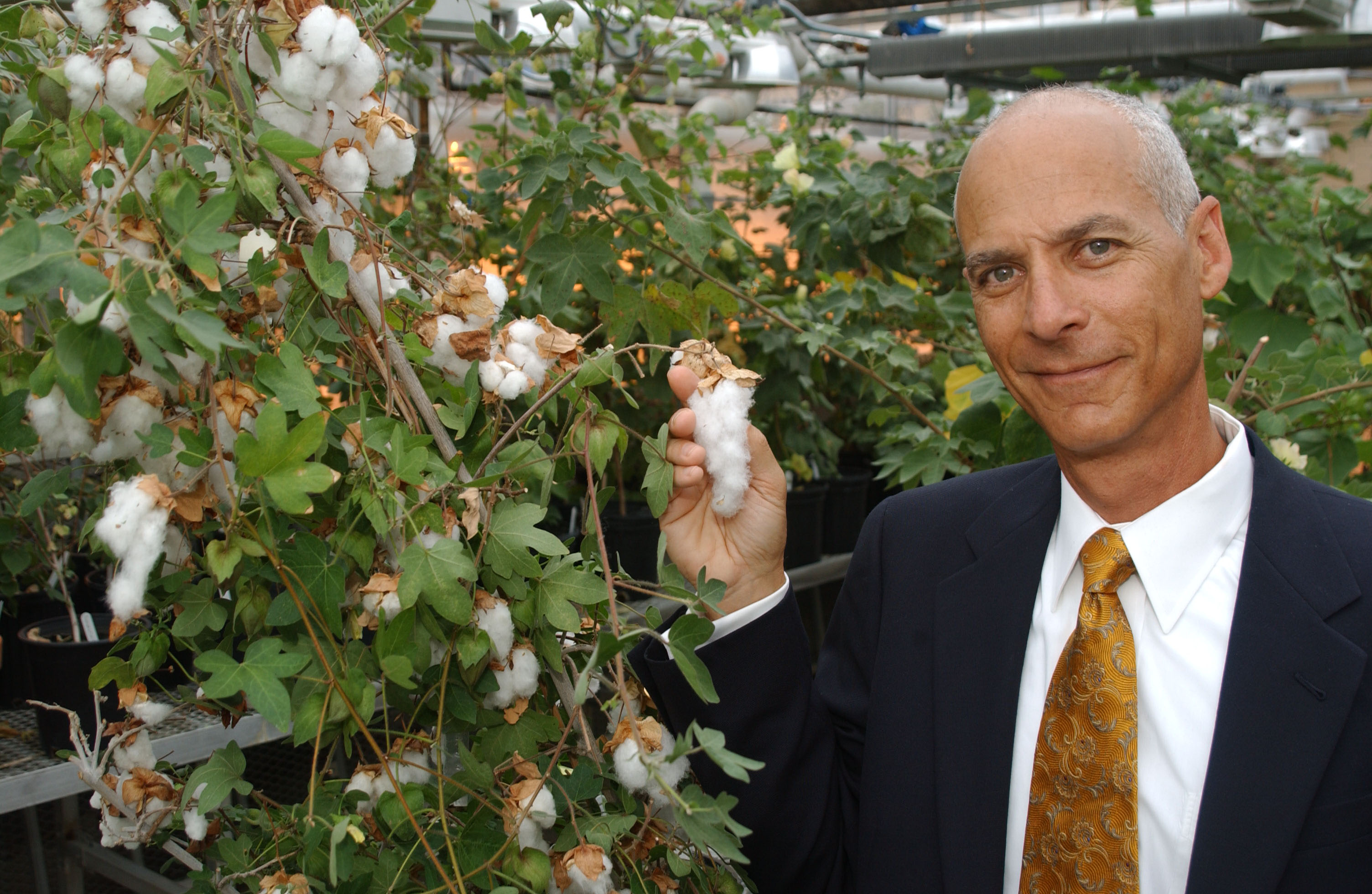
Mapping entire genomes is just the beginning for Jonathan Wendel, who studies how plants — specifically cotton — evolve and diversify.
Wendel, a Distinguished Professor and Chair of the Department of Ecology, Evolution, and Organismal Biology at Iowa State University, studies evolutionary biology to understand how biodiversity arises.
[feature_image]
"Cotton is just an incredibly useful model for addressing that fundamentally interesting question of biodiversity that everybody on the planet is interested in even if they don’t realize it," Wendel said. "Because all of their food and everything they do, their whole world, revolves around this diversity that sustains, clothes, and feeds us."
In 2012 Wendel helped sequence the entire genome of diploid cotton, meaning, like humans, it received one set of genes from each parent. The cotton of blue jeans, Q-tips and daily life, though, is mostly polyploid, having received two sets of genes from its two different ancestral parents.
Wendel recently received a grant from the National Science Foundation to determine the sequence of 600 more cotton genomes, including both diploid and the polyploid species. But sequencing the genes is just the beginning of the research.
"We can now sequence genomes pretty easily," Wendel said.
But understanding how all the genes work together gets very complex and isn’t well understood yet.
“Diploid cotton has 40,000 genes, polyploid cotton has 80,000 genes, and they’re all singing in some sort of 80,000 part harmony with some sort of choral conductor,” Wendel said.
What Wendel does know is that polyploid cotton species produce softer, whiter, and more desirable cotton, which is useful to humans. Through his research he aims to understand why and how — how the extra genes have adapted and how they affect the structure and development of the plant to make the cotton more desirable for human uses. Wendel notes that all of our plants, including all food plants that sustain human life, have a history of polyploidy, so understanding this process is important for agricultural productivity.
"I always ask the evolutionary questions because they’re the ones that are fundamentally important to everything," Wendel said. "They’re the ones that lead to diversity in nature, to the origin of crop plants — all of that is an evolutionary process."
Cotton is one of many plants that have been domesticated by humans over time, evolving through breeding, to become plants that are better suited for human needs. These domesticated plants become so common it is easy to forget that they differ from their wild ancestors.
"There’s nothing like cotton in nature," Wendel said. "There is nothing like an ear of maize in nature, or a head of broccoli. Humans created these through strong directional selection from ancestors that looked much worse."
Cotton that is farmed today was domesticated separately in Africa, the Indian subcontinent, northwest South America and the Yucatan peninsula. Of the four domesticated cotton species, two of these are diploid, and two are polyploid. Wendel marvels that “we have been given a replicated experiment initiated thousands of years ago by different, long-extinct cultures.”
In addition to these four domesticated species, many wild species of cotton still grow in nature and can be directly compared with the domesticated species.
"Normally people can’t work with fossils, they’re dead and gone," said Wendel. “But with domesticated plants where the wild ancestors still are growing, I have the before and after condition right in front of me. I can find out exactly how they’re different."
Wendel’s research aims to understand how the process of domestication changes, or evolves, the plant at a genetic level so that others can use that knowledge to continue improving cotton and other plants for human use. In addition, he hopes this knowledge improves our understanding of all plant life.
“It is such an exciting time to be a plant biologist,” Wendel said. "I wish I was starting now instead of 30 years ago because we’re just getting going."